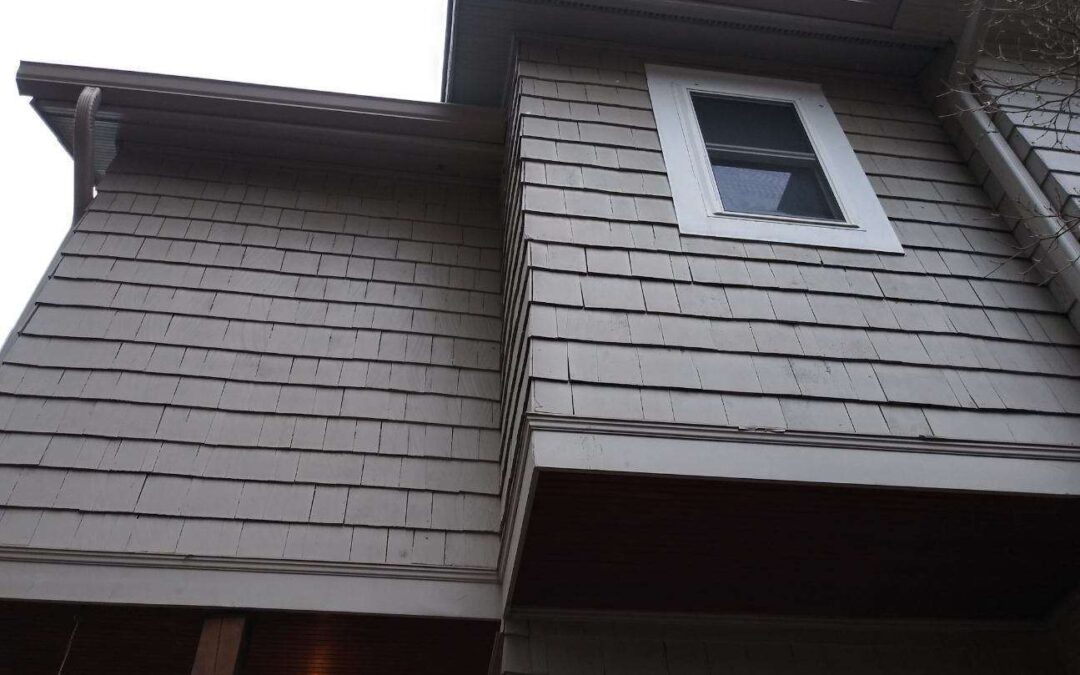Wood soffit is a vital component of your home’s exterior, providing essential protection to your roofline while enhancing your property’s aesthetic appeal. In this in-depth guide, we cover everything you need to know about wood soffit repair and replacement—from recognizing signs of damage and exploring repair techniques, to understanding when a full replacement might be necessary. This post is purely informational and is intended to empower homeowners in Cincinnati, Ohio with valuable insights. Gutters Etcetera is proud to share this knowledge without making any service commitments.
Understanding Wood Soffit and Its Role
The soffit, typically found underneath the roof overhang, is a horizontal board that plays several crucial roles in the health and appearance of your home:
- Ventilation Improvement: A properly installed wood soffit facilitates the flow of air in your attic, reducing moisture buildup and helping to prevent mold and mildew.
- Weather Protection: By shielding the underside of your roof, the soffit protects rafters and other structural elements from rain, snow, and harsh UV rays.
- Curb Appeal: A well-maintained soffit contributes to a neat, polished look, enhancing the overall visual appeal of your home’s exterior.
Understanding these functions is the first step toward recognizing the importance of regular maintenance and timely repairs.
Recognizing Common Soffit Issues
Regular inspections can help you catch potential problems early before they escalate into costly repairs. Look for these common signs of deterioration in your wood soffit:
- Cracks and Splitting: Exposure to fluctuating temperatures and weather conditions can cause the wood to crack or split over time.
- Rot and Decay: Prolonged moisture exposure may lead to wood rot, compromising both the appearance and structural integrity of the soffit.
- Pest Infestation: Damaged wood can attract pests such as termites and carpenter ants, which can further deteriorate the material.
- Loose Fasteners: Over time, nails and screws may become loose due to weathering or vibrations, making the soffit less secure.
- Discoloration: Fading or uneven coloring might indicate water damage or excessive sun exposure, suggesting that the wood’s protective layer is breaking down.
Early detection of these issues can help you decide whether a repair or replacement is necessary to safeguard your home.
Step-by-Step Guide to DIY Wood Soffit Repair
For many homeowners, addressing minor soffit issues can be a manageable DIY project. Here’s a detailed guide to help you navigate the repair process safely and effectively:
1. Prioritize Safety
- Protective Gear: Equip yourself with gloves, safety glasses, and a dust mask to protect against debris and dust.
- Secure Ladder Setup: Always use a stable ladder placed on a flat surface to safely access the soffit area.
2. Inspect and Assess the Damage
- Thorough Examination: Conduct a comprehensive inspection of the entire soffit. Look for signs of decay, insect damage, or loose fasteners.
- Determine the Extent: Decide whether the damage is isolated and can be repaired, or if it is widespread enough to warrant a full replacement.
3. Removing Damaged Sections
- Gather the Right Tools: Use a pry bar, hammer, and reciprocating saw to carefully remove the affected sections of the wood.
- Avoid Collateral Damage: Remove only the compromised parts to ensure that adjacent, intact areas remain unharmed.
4. Preparing for Repair
- Clean the Work Area: Remove all debris, old fasteners, and loose material from the damaged area to create a clean base for repair.
- Accurate Measurements: Measure the dimensions of the removed section accurately so that the new piece fits perfectly.
5. Installing Replacement Wood
- Secure Attachment: Fasten the new wood using weather-resistant nails or screws. For added security, consider applying a quality construction adhesive.
- Proper Sealing: Once installed, seal the joints and surfaces with a high-grade sealant or paint to protect the new wood from moisture and UV damage.
6. Final Inspection and Touch-Up
- Review the Repair: Conduct a final inspection to ensure that the new installation is secure and seamlessly integrated with the existing soffit.
- Additional Protection: Apply an extra coat of sealant or paint if needed, ensuring consistent protection and an even finish.
When Replacement Is the Better Option
While DIY repairs can resolve many issues, there are circumstances when a full replacement of the wood soffit is the better long-term solution:
- Extensive Damage: If a significant portion of your soffit shows signs of rot, insect damage, or structural compromise, replacement might be more cost-effective and secure.
- Age-Related Deterioration: Over time, even well-maintained wood can become too worn for repairs. In such cases, upgrading to new materials can restore both function and appearance.
- Enhanced Functionality: New soffit materials may offer improved ventilation and durability, contributing to better overall energy efficiency and protection against weather elements.
Assessing the severity of the damage is key to making an informed decision on whether to repair or replace your soffit.
Choosing the Right Materials and Techniques
Selecting the appropriate material for your soffit repair or replacement is crucial for long-lasting results. Consider the following options:
Traditional Wood Soffit
- Pros: Offers a classic, natural appearance that complements many home styles.
- Cons: Requires regular maintenance and is susceptible to moisture, rot, and insect damage if not properly cared for.
Composite Soffit
- Pros: Provides enhanced durability, better resistance to moisture and pests, and often requires less maintenance.
- Cons: Generally comes with a higher upfront cost and might not capture the same traditional look as natural wood.
Best Installation Practices
- Overlapping Panels: Installing panels in an overlapping pattern can help prevent water infiltration and ensure a tight seal.
- Integrated Ventilation: Consider using vented soffit panels to promote airflow in the attic, which helps control moisture levels.
- Precision Cutting: Ensure accurate measurements and cuts for a seamless, professional-looking finish.
These material choices and installation techniques are designed to help you achieve both aesthetic appeal and functional durability.
Maintenance Tips to Extend Soffit Lifespan
Maintaining your wood soffit is key to preserving its function and appearance. Regular upkeep can prevent minor issues from evolving into major repairs. Here are some essential maintenance tips:
- Conduct Regular Inspections: Check your soffit at least twice a year, preferably in the spring and fall, to catch early signs of damage.
- Gentle Cleaning: Use a mild detergent solution to clean the soffit, removing dirt, mold, and mildew without damaging the wood.
- Reapply Protective Coatings: Regularly update the sealant or paint to ensure continuous protection against moisture and UV rays.
- Trim Overhanging Vegetation: Keep branches and shrubs away from the soffit to prevent physical damage and reduce moisture retention.
- Address Repairs Promptly: Small cracks or signs of decay should be repaired as soon as possible to avoid more extensive damage in the future.
By following these practices, you can extend the life of your soffit and maintain the overall health of your home’s exterior.
Frequently Asked Questions (FAQs)
What is the primary function of a wood soffit?
The wood soffit is essential for promoting proper ventilation in the attic, protecting structural elements from weather-related damage, and enhancing the overall curb appeal of your home.
How do I know if my soffit needs repair or replacement?
Common signs include cracking, splitting, rot, pest infestation, and loose fasteners. While minor issues might be repairable, widespread damage usually calls for full replacement.
Is DIY repair feasible for all soffit issues?
Many minor repairs can be handled by homeowners with basic carpentry skills. However, if the damage is extensive or if you’re uncertain about the structural integrity of your soffit, consulting a professional may be wise.
What materials are best for soffit replacement?
Traditional wood offers a classic look but requires regular maintenance, while composite materials provide enhanced durability and reduced upkeep at a higher initial cost.
How often should I inspect my soffit?
It’s recommended to inspect your soffit at least twice a year—typically during the spring and fall seasons—to ensure any issues are identified and addressed promptly.
Conclusion
Maintaining the integrity of your wood soffit through timely repair or replacement is crucial to protecting your home from the elements and preserving its overall curb appeal. By understanding the functions, common issues, and proper maintenance practices of your soffit, you can make well-informed decisions that enhance your home’s exterior longevity. This guide is provided solely for informational purposes, with no service commitments made by Gutters Etcetera.

